I became interested in the work of Philip Beesley as it allows for a reconsideration of what is necessary to create a sense of enclosure (allowing for a new foray into light(ness)) as well as a reconsideration of what movements a piece of architecture can produce.
Items are not produced from large construction, rather that are created from multiple individual elements assembled into aggregates, fields, surfaces, and clouds…many small elements operating together in a larger network.
Symbiogenesis—the merging of separate organisms to form a new organism.
Lightweight architecture, which is informed by the inventive work of Frei Otto and Felix Candella, where a minimum of material is used to create the maximum impact.
“Interlinking matrices of mechanical components and arrays of sensors and actuators that respond to occupants moving within the environment. Lightweight lattices and geodesic organizations form a structural core, employing digitally fabricated lightweight scaffolds that contain distributed networks of sensors and actuators.”
“A key term for my pursuit is empathy. My use of this term draws upon aesthetic theory that examines nuanced relationships involving projection and exchange…I hope to develop a stand in an intertwined world that moved beyond closed systems…I want to develop a sensitive vocabulary of relationships. In terms of figure-ground relationships the figures I compose are riddled with the ground.”
“Take the belief that we are surrounded by discrete bodies or objects, each having a boundary or edge at its extremity. While at a certain level of engagement with the world it is natural to regard objects around us in this way, a more objective view would recognize that boundaries are in fact arbitrary and contingent.”
Biennale Interview:
Hilarious news channel interview:
Cybele (2005)
Self-assembling landscape. Serrated cellulose edges, fitted with barbs similar to porcupine quills or burrs encourage burrowing and knitting action. Massed bladders provide fluid reservoirs. Magnet joints pull individual tiles into semi-regular crystal packing patterns.
Hungry Soil (2000)
A wire mesh matrix. Hooks allow it to grab onto itself, allowing self-assembly. Rubber bladders house materials to support plant growth.
Haystack Veil (1997)
Twigs cut and assembled into a geodesic framework that accommodated distortions and interruptions in the forest floor. It stood for several years and accumulated new ecosystems while sustaining erosions from large-mammal movment.
In terms of economy and environment, this serves as a precedent for the use of found natural materials.
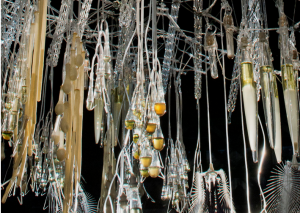
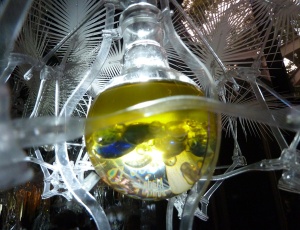
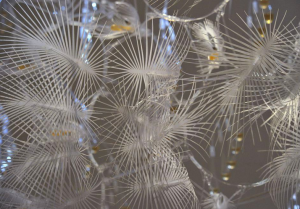
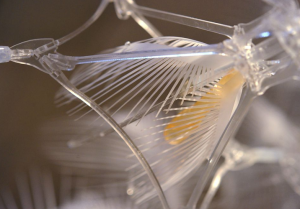
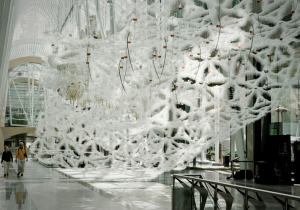

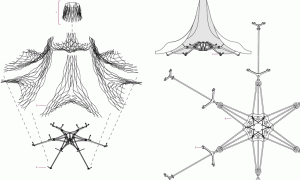
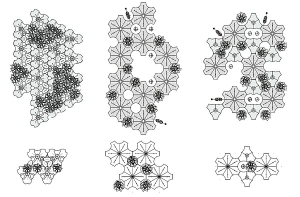
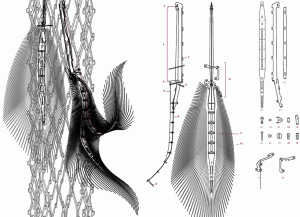
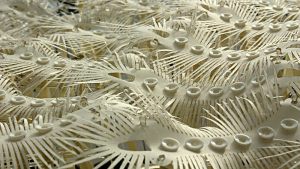
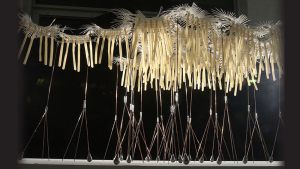

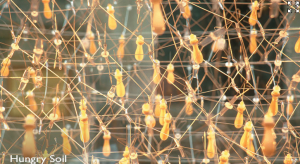


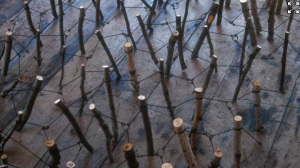


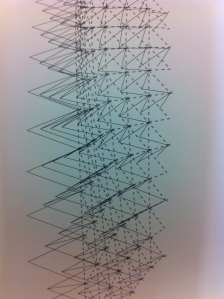
Mimosa Pudica, the sensitive plant: